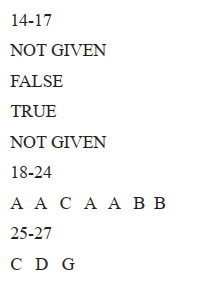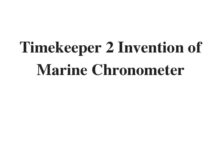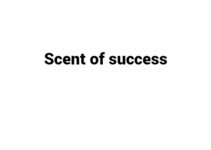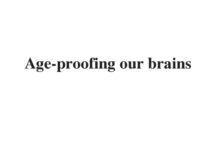Table of Contents
Passage
A This is ludicrous! We can talk to people anywhere in the world or fly to meet them in a few hours. We can even send probes to other planets. But when it comes to getting around our cities, we depend on systems that have scarcely changed since the days of Gottlieb Daimler.
B In recent years, the pollution belched out by millions of vehicles has dominated the debate about transport. The problem has even persuaded California that home of car culture to curb traffic growth. But no matter how green they become, cars are unlikely to get us around crowded cities any faster. And persuading people to use trains and buses will always be an uphill struggle. Cars, after all, are popular for very good reasons, as anyone with small children or heavy shopping knows.
C A professor of mechanical engineering sits typing at a computer keyboard, conjuring up a scene on his monitor that looks something like the classic computer game PacMan. White dots stream in from the right of the screen, switch to red, and merge with green boxes, which swiftly change colour to yellow and then red, while moving through a bewildering maze. But this is not a video game. J. Edward Anderson of Boston University is testing an urban transit system that he believes could revolutionise public transport worldwide.
D For the past quarter of a century, Anderson has been promoting his version of a personal rapid transit (PRT). Other versions came and went in the 1970s, from Europe, Japan and elsewhere in the US, but he was so convinced of the idea’s potential that he stuck with it and, in 1983, founded the Taxi 2000 Corporation to ’commercialise’ the initiative. Although the University of Minnesota, Anderson’s employer until 1986, holds the patents to the technology, he is licensed to develop it and to sub-license other developers. So politicians should be trying to lure people out of their cars, not forcing them out. There’s certainly no shortage of alternatives. Perhaps the most attractive is the concept known as personal rapid transit (PRT), independently invented in the US and Europe in the 1950s.
E The idea is to go to one of many stations and hop into a computer-controlled car which can whisk you to your destination along a network of guide ways. You wouldn’t have to share your space with strangers, and with no traffic lights, pedestrians or parked cars to slow things down, PRT guideways can carry far more traffic, nonstop, than any inner city road. It’s a wonderful vision, but the odds are stacked against PRT for a number of reasons. The first cars ran on existing roads, and it was only after they became popular and after governments started earning revenue from them that a road network designed specifically for motor vehicles was built. With PRT, the infrastructure would have to come first and that would cost megabucks.
F What’s more, any transport system that threatened the car’s dominance would be up against all those with a stake in maintaining the status quo, from private car owners to manufacturers and oil multinationals. Even if PRTs were spectacularly successful in trials, it might not make much difference. Superior technology doesn’t always triumph, as the VHS versus Betamax and Windows versus Apple Mac battles showed.
G But “dual-mode” systems might just succeed where PRT seems doomed to fail. The Danish RUF system envisaged by Palle Jensen, for example, resembles PRT but with one key difference: vehicles have wheels as well as a slot allowing them to travel on a monorail, so they can drive off the rail onto a normal road. Once on a road, the occupant would take over from the computer, and the RUF vehicle the term comes from a Danish saying meaning to “go fast” would become an electric car.

H Build a fast network of guideways in a busy city centre and people would have a strong incentive not just to use public RUF vehicles, but also to buy their own dual-mode vehicle. Commuters could drive onto the guide way, sit back and read as they are chauffeured into the city. At work, they would jump out, leaving their vehicles to park themselves. Unlike PRT, such a system could grow organically, as each network would serve a large area around it and people nearby could buy into it. And a dual-mode system might even win the support of car manufacturers, who could easily switch to producing dual-mode vehicles. The RUF system can reduce the energy consumption from individual traffic. The main factor is the reduction of air resistance due to close coupling of vehicles. The energy consumption per ruf can be reduced to less than 1/3 at 100 km/h. Since RUF is an electric system, renewable sources can be used without problems. A combination of windmills and a RUF rail could be used over water. Solar cells can also be integrated into the system and ensure completely sustainable transportation.
I Of course, creating a new transport system will not be cheap or easy. But unlike adding a dedicated bus lane here or extending the underground railway there, an innovative system such as Jensen’s could transform cities. The vehicles in a RUF system “rides” very safely on top of a triangular monorail. This means that derailments are impossible and that the users will feel safe because it is easy to understand that when the rail is actually inside the vehicle it is absolutely stable. The special rail brake ensures that braking power is always available even during bad weather. The brake can squeeze as hard against the rail as required in order to bring the vehicle to a safe stop. If a vehicle has to be evacuated, a walkway between the two rails can be used.
J And it’s not just a matter of saving a few minutes a day. According to the Red Cross, more than 30 million people have died in road accidents in the past century three times the number killed in the First World War and the annual death toll is rising. And what’s more, the Red Cross believes road accidents will become the third biggest cause of death and disability by 2020, ahead of diseases such as AIDS and tuberculosis. Surely we can find a better way to get around.
Questions
Questions 14-17 Do the following statements agree with the information given in Reading Passage
In boxes 14-17 on your answer sheet, write
TRUE if the statement agrees with the information
FALSE if the statement contradicts the information
NOT GIVEN if there is no information on this
14 Cars develop slower than communication system.
15 Many states in the US consider to reduce cars growth.
16 Car pollution has been concerned these days.
17 Trains and buses are not suitable to drive on uphill road.
Questions 18-24 Use the information in the passage to match the category (listed A-C) with description below. Write the appropriate letters A-C in boxes 18-24 on your answer sheet.
A ONLY PRT
B ONLY RUF
C BOTH OF THEM
18 Totally apply computer system
19 Opposition to system from companies
20 Reach destination fast
21 Not necessary to share with the public
22 Work on existing road
23 Individuals can buy the cars after all
24 Controlled both by computer and manual
Questions 25-27 Choose THREE correct letters from followings that are advantages of developing a NEW TRANSPORT SYSTEM. Write your answers in boxes 25-27 on your answer sheet.
A Stimulating economy
B Successful application in Europe
C Safety consideration
D Less pollution to environment
E Economical budget
F Public popularity
G Fast speed
Answers



